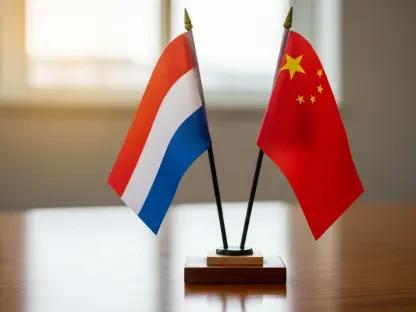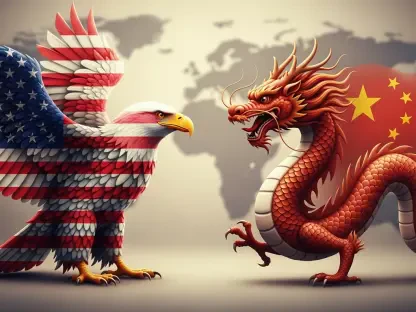After a short three-day strike, the International Longshoremen’s Association (ILA) has gone back to work at ports along the East and Gulf Coasts of the United States. The strike began on October 1, 2024, due to delayed wage negotiations but was resolved quickly by October 4.
Overview of the Strike
The protest happened because workers wanted higher pay in a new six-year work agreement. The United States Maritime Alliance (USMX) agreed to give union members an immediate $4 raise, increasing their pay to $39 an hour, which is over a 10% raise. They also agreed to give an extra $4 raise every year for the length of the contract, which could mean a total raise of 62%.
Impact on Supply Chains
The rapid resolution of the strike proved crucial for maintaining supply chain stability. Many shipping companies anticipated the stoppage and moved goods through ports ahead of the deadline, limiting potential disruptions. However, this situation heightened consumer anxiety, prompting some to rush to stores for supplies, even though most products, including toilet paper, remained unaffected.
This spike in consumer behavior illustrates how quickly anxiety can manifest in panic buying, especially during labor disputes. Understanding the implications of such behavior is essential, particularly as it ties into broader issues of supply chain resilience and consumer psychology.
Steps Toward Normal Operations Following the Port Strike
The strike was short, but it will take time for operations to return to normal. Experts in logistics estimate that it could take three to five days for goods to flow smoothly after any port closure. Key ports like New York and New Jersey are gradually repositioning containers and restoring truck access. They are also extending working hours to address backlogs.
The recent strike was the first of its kind in nearly fifty years, showing ongoing challenges in labor negotiations. Although the ports were closed for only three days, the economic impact was significant. The Port Authority of New York and New Jersey reported losses of $250 to $300 million per day, adding up to around $1 billion.
Lessons from Empty Shelves on Panic Buying in Times of Crisis
The recent strike has caused empty toilet paper shelves, bringing back memories of panic buying from the early days of the pandemic. Surprisingly, 75% of consumers admitted to panic buying at least once during that chaotic period, showing how our purchasing decisions are influenced by psychological forces during crises.
Stockpiling Trends
The majority of toilet paper sold in the US is made in the country, so even though there has been a strike causing some issues, there is still enough supply. People tend to panic and stock up on items like toilet paper when they see empty store shelves, especially when they see these images on social media. This collective anxiety leads to unnecessary stockpiling.
How Do We Solve This?
Minor disruptions can put consumer worry in overdrive. The recent port strike shows how quickly people can start panic buying when they feel threatened. To better prepare for future crises, addressing the root causes of panic buying and promoting rational consumer behavior is essential.
Future Considerations and Actionable Insights
While the recent agreement following the port strike is positive, the risk of future strikes remains. Union members must approve the final contract, and if rejected, another strike could occur. As port activities return to normal, stakeholders must stay vigilant. The interplay of labor relations, economic pressures, and global supply chain dynamics will continue to shape U.S. ports.
To mitigate excessive buying during future disruptions, stakeholders can implement the following strategies:
For Consumers:
Stay Informed: Seek accurate information from reliable sources to understand actual supply conditions.
Plan Ahead: Prepare a shopping list focused on essentials to reduce impulse purchases driven by fear.
For Retailers:
Clear Communication: Provide transparent updates on stock levels and supply chain status to help alleviate consumer anxiety.
Encourage Rational Purchasing: Promote responsible shopping behavior, emphasizing the importance of buying only what is needed.
For Policymakers:
Educational Campaigns: Implement initiatives to inform the public about psychological preparedness and strategies for coping with fear-driven behaviors.
Support Resilient Supply Chains: Develop policies to enhance supply chain resilience, minimizing disruptions and maintaining consumer confidence.
A Qualitative Exploration of Public Experiences During the COVID-19 Pandemic
During extreme events, shopping is often called “panic buying,” suggesting it’s irrational. However, this view misses key psychological and structural factors. A qualitative study from the COVID-19 pandemic showed that increased shopping often came from sensible responses to perceived risks, like stockpiling or reducing trips to stores.
Researchers highlight that these behaviors are shaped by social learning and influenced by media coverage, government policies, and demographic factors such as income and family structure. Recent studies call for a better understanding of these influences instead of labeling consumer behavior as irrational. The data below aims to explore public perceptions and experiences of product shortages during the pandemic, focusing on individual stories often overlooked in past research.
Scarcity and Urgency as Dual Forces Behind Panic Buying
While the psychological factors driving panic buying are significant, some critics argue that consumer behavior during crises can also be explained by rational decision-making in response to perceived scarcity. For example:
70% of purchases occur in-store, with approximately 68% of those being unplanned (Kotler, 2012).
Consumers often stock up on products they believe will become unavailable to avoid future shortages.
Some may see panic buying as a practical strategy for ensuring access to essential goods.
Brands like Sony and Zara effectively use scarcity as a marketing tool to influence consumer behavior. When consumers perceive that scarcity is intentionally created, they experience a strong urge to buy due to anticipated regret about missing out on a product. Behaviors like hoarding or hiding items in stores are not far behind.
Key psychological drivers include fear of missing out (FOMO), which means consumers feel uncertain about product availability, prompting immediate purchases. Furthermore, this phenomenon triggers competitive behaviors, leading consumers to secure products before others can.
The study indicates that while rationality may play a role in these behaviors, psychological factors dominate. The phenomenon of a “self-fulfilling prophecy” emerges as increased panic buying, which is simply put, a cycle of fear that perpetuates further scarcity perceptions.
In conclusion, acknowledging these alternative explanations enriches the conversation by highlighting the complexities involved. As we reflect on the implications of the recent port strike crisis, it is clear that the delicate balance between labor demands and economic stability will likely continue to trigger consumer anxiety. Lastly, there is a pressing need for a more resilient consumer mindset in the face of uncertainty.
Navigating the Fine Line of Scarcity in Retail
Retailers constantly compete to attract customers and influence their buying decisions. A key question is whether they should create a sense of scarcity around their products. Research suggests this strategy has both benefits and drawbacks, which have implications not just for businesses but also for government policy.
Advantages
By limiting product availability, retailers can trigger feelings of anticipated regret in consumers, motivating them to buy quickly. This can lead to increased sales in the short term, benefiting both retailers and local economies.
Disadvantages
On the flip side, inducing scarcity can lead to negative behaviors like in-store hoarding and hiding. Such behaviors can hurt sales, as hidden items are less likely to be purchased. This pattern can create a chaotic shopping environment that may necessitate government intervention in times of crisis to maintain order and ensure consumer safety.
Recommendations for Retailers
Be Cautious with Limitations: Retailers should carefully manage how they create scarcity to avoid encouraging hiding behaviors that can disrupt the shopping experience.
Flexible Policies: Implementing lenient return policies or holding products for customers can mitigate hiding, although this may reduce the perceived scarcity effect.
Organized Store Ambience: A tidy, well-organized store environment can deter hiding, as consumers may feel more exposed, promoting a healthier shopping atmosphere.
Responsive Staff: Training employees to efficiently assist with retrieving hidden products can help maintain a positive shopping experience.
Short-Term Holds: Allowing temporary holds on items can give customers time to decide without resorting to hiding.
Tracking Products: Using sophisticated ID tags can help monitor and retrieve hidden items effectively.
Government’s Role
The U.S. government plays a crucial role in regulating retail practices, particularly during emergencies. Policies that ensure transparency in supply chains and promote fair marketing practices can mitigate the risks associated with scarcity-driven behaviors. Additionally, government agencies can issue guidelines or advisories to consumers during crises, helping to manage public perception and reduce panic buying.
Overall, retailers need to strike a balance between creating a sense of urgency and managing potential negative behaviors to enhance their financial performance. By collaborating with government entities, they can foster a retail environment that supports both economic growth and consumer welfare, ultimately leading to a more stable marketplace.
Summary of Key Research Findings
Recent research has shown that:
Panic buying is often a rational response to perceived scarcity, influenced by social learning and media coverage.
Collective anxiety can lead consumers to stockpile unnecessary items.
Retailers’ marketing strategies can intentionally create scarcity, impacting consumer behavior significantly.
Future Research Directions
Further studies could explore:
The psychological triggers behind panic buying in different demographic groups.
The long-term effects of media portrayal of shortages on consumer behavior.
Strategies to foster a more resilient consumer mindset during crises.
Conclusion
The urgency to buy is often triggered by deliberate scarcity, leading consumers to hoard or hide items. This behavior, driven by fear of missing out and competitive instincts, highlights the need for tailored communication strategies to mitigate panic buying during crises. Understanding these elements can help policymakers and retailers develop effective interventions that address the underlying motivations and perceptions driving consumer behaviors.









